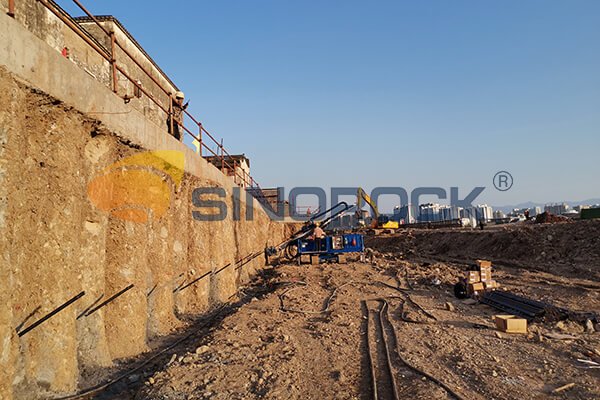The geographical restrictions of the deep foundation pit support project are relatively large. When the deep foundation pit encounters a soft soil layer, it will increase the possibility of safety accidents. The geological conditions of the soft soil layer will cause certain difficulties in construction, and the geological parameters are inherently uncertain. It is necessary to ensure the anchoring effect in the later stage of the project. It is not important to choose a safe support method. Below, we will introduce how to support deep foundation pits when encountering soft soil layers.

Difficulties of Soft Soil Layer Support
Thixotropy: After the soft soil in the original state is shaken, the soil structure is damaged and its strength is also reduced. At this time, the soft soil will soon show a state of dilution, lateral slippage, and settlement. And the possibility of base side extrusion phenomenon increases.
High compressibility: The soft soil has a large compressibility coefficient, and the parts with a vertical pressure of about 100kPa have a higher probability of compression deformation.
Rheology: Rheology refers to the long-term and slow shear denaturation phenomenon of soft soil under the influence of shear stress.
Low water permeability: The water permeability of soft soil is relatively weak, which has an adverse effect on the drainage function of the foundation.
Low strength: The strength of the soft soil layer is low. Its undrained shear strength is usually below 20kPa.
Inhomogeneity: Under the influence of environmental deposition changes, silt with uneven thickness is often mixed into the cohesive soil layer, which interferes with the distribution of the soft soil in the direction.
Soft Soil Layer Support Method for Deep Foundation
Self-drilling rock bolts can be used for the support of soft soil layers in deep foundation pits and can be used in strata with certain cementing ability and compactness, such as clay, silt, sand, gravel, and pebble strata. The hollow bolt body of the self-drilling rock bolt is both the bolt and the drill pipe. After connecting the drill bit, the end is connected with the grouting machine and the drilling rig to drive into the formation. The self-drilling hollow bolt can be drilled while grouting into the formation through the grouting hole of the drill bit, so that the cement slurry is combined with the surrounding soil, and the bolt body and the soil together form an anchor body, which plays the role of group anchoring.
In the case of deformation of the soft soil layer, the self-drilling anchor bolts restraints and reinforce the soil body through the bonding friction force in contact with the soil body to make it stable. Therefore, the setting direction of the self-drilling rock bolt needs to be roughly the same as the direction of the main tensile strain that may occur in the soil in order to achieve a good anchoring effect.
Self-drilling anchors have obvious advantages in deep foundation pit support projects. They do not require casing follow-up, are economical and efficient, simplify construction procedures, and have fast construction speed. Usually, about 25% of the workload can be saved, which greatly reduces the engineering cost. It is especially suitable for soft soil and sandy pebble formations where ordinary bolts or soil nails cannot form holes.
The above is the answer to the question of how to support the deep foundation pit in the soft soil layer. The self-drilling anchor system support has been repeatedly practiced and tested. After studying the geological characteristics of the deep foundation pit in the soft soil layer, the formula safe and efficient support solution.